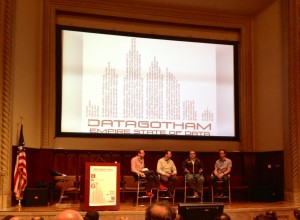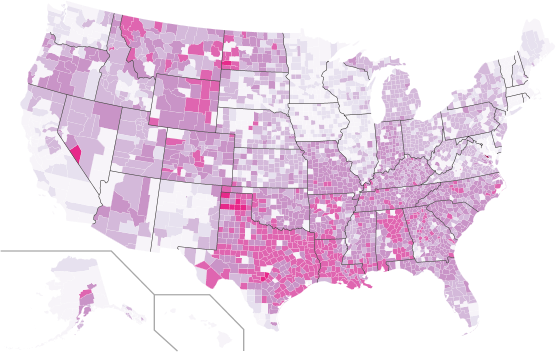This is a guest post by Jen Schradie. Jen is a doctoral candidate in the Department of Sociology at the University of California-Berkeley and the Berkeley Center for New Media. She has a master’s degree in sociology from UC Berkeley and a MPA from the Harvard Kennedy School. Using both statistical methods and qualitative fieldwork, her research is at the intersection of social media, social movements and social class. Her broad research agenda is to interrogate digital democracy claims in light of societal and structural differences. Before academia, she directed six documentary films on social movements confronting corporate power. You can find her at www.schradie.com or @schradie on Twitter.
Five years ago, Chris Anderson, editor-in-chief of Wired Magazine, wrote a provocative article entitled, “The End of Theory: The Data Deluge Makes the Scientific Method Obsolete” (2008). He argued that hypothesis testing is no longer necessary with google’s petabytes of data, which provides all of the answers to how society works. Correlation now “supercedes” causation:
This is a world where massive amounts of data and applied mathematics replace every other tool that might be brought to bear. Out with every theory of human behavior, from linguistics to sociology. Forget taxonomy, ontology, and psychology. Who knows why people do what they do? The point is they do it, and we can track and measure it with unprecedented fidelity. With enough data, the numbers speak for themselves.
An easy strawman, Anderson’s piece generated a host of articles in academic journals decrying his claim. The overall consensus, to no surprise, was that the scientific method – i.e. hypothesis testing – is far from over. Most argued as Pigliucci (2009:534) articulated,
But, if we stop looking for models and hypotheses, are we still really doing science? Science, unlike advertising, is not about finding patterns—although that is certainly part of the process—it is about finding explanations for those patterns.
Other analysts focused on the debate around “correlation is not causation.” Some critiqued Anderson in that correlation can lead you in the wrong direction with spurious noise. Others implicitly pointed to what Box (1976) articulated so well pre-Big Data – that science is an iterative process in which correlation is useful in that it can trigger research which uses hypothesis testing.


